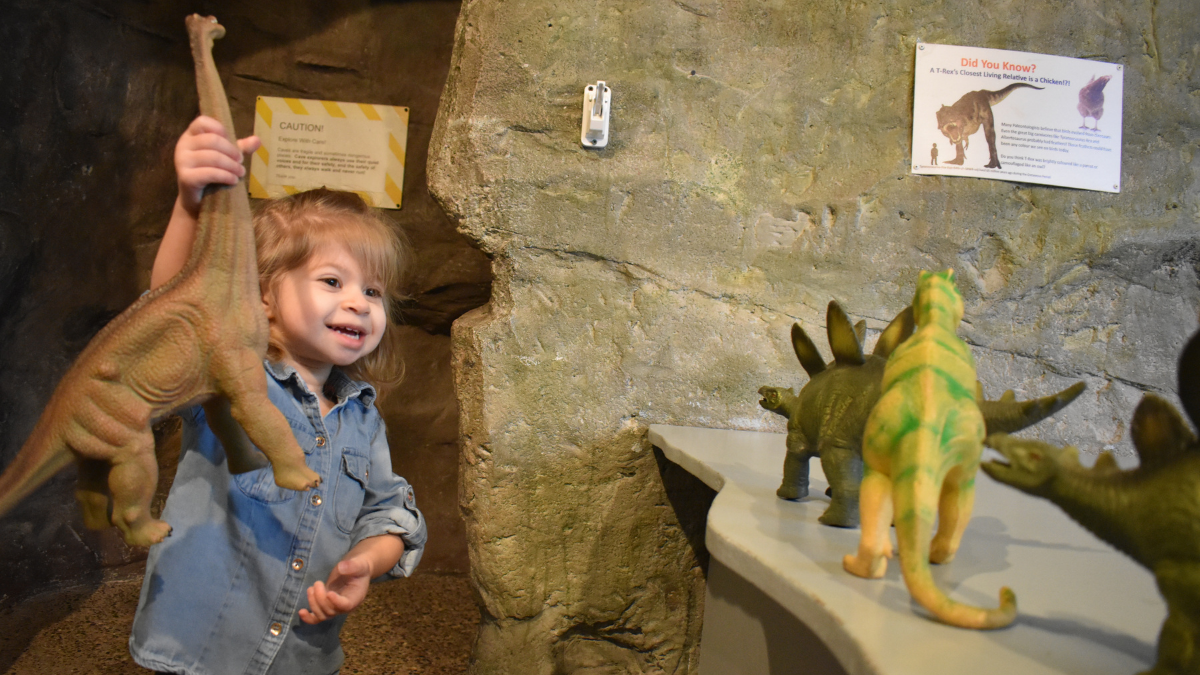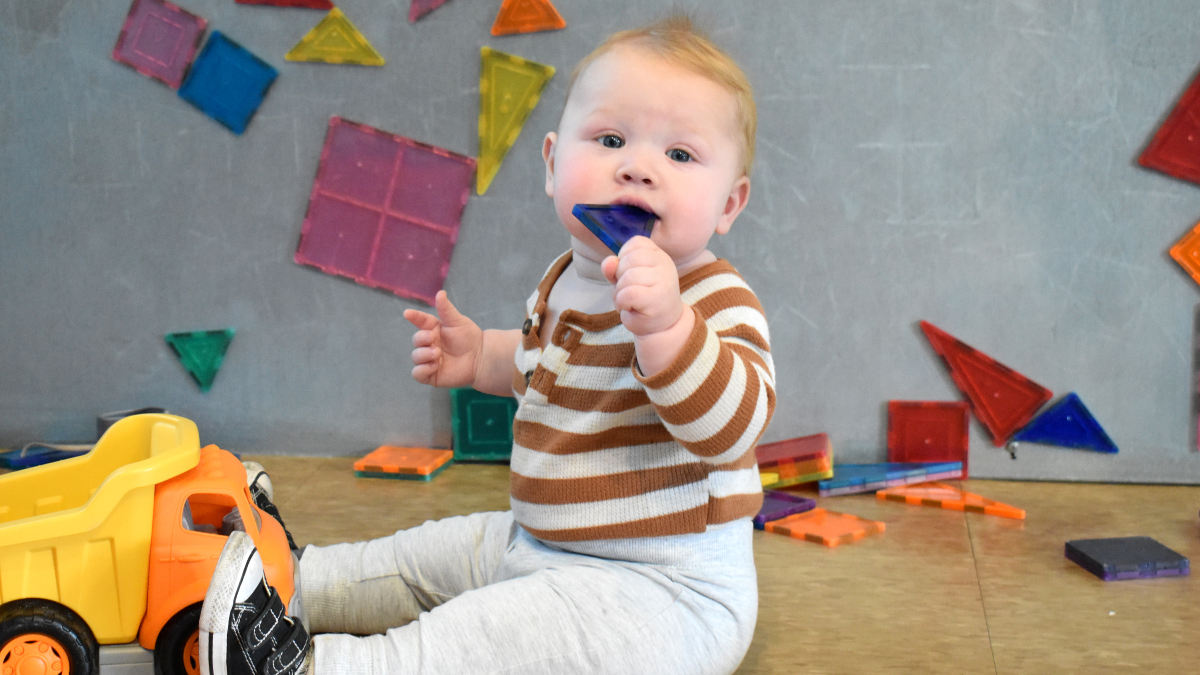Bring Your Baby
Parents and caregivers often wonder what their babies learn while visiting London Children’s Museum. With the help of our Program Facilitator, Hannah, we’ve compiled a list of ways to play, specifically for babies (age 0-12+ months) and their caregivers. These activities are designed to encourage positive social, emotional, cognitive, and physical growth in early learners!
Dinosaur
Explore the Dig Pit. Sensory skills are one of the first ways babies learn about themselves and the world. Tactile sense helps navigate new surroundings, identify objects by touch, detect different temperatures, and determine pressure. With the help of caregivers, even the littlest visitors can experience the dig pit and feel sand pellets between their fingers and toes.
Touch Dinosaur Fossils. Babies can explore the texture and weight of different fossils. These items offer a unique sensory experience that supports babies’ healthy brain development. As babies grow and learn to crawl and walk, they receive sensory input through both their hands and feet.
Things in Caves
Crawl through the Caves. Babies ready to crawl take in a lot of information through their hands and feet. This information helps crawlers navigate their surroundings. The cave’s child-sized tunnels are an exciting way to move through this exhibit and build a sense of independence.
Indulge the Senses. The caves offer a distinct sensory experience that changes as children grow and develop. Spend time exploring the black lights, colours, and interesting textures.
Child Long Ago
Practice Counting. Use the abacus to practice counting and naming colours. Babies demonstrate the link between thought and action through their hands, linking manual dexterity directly to cognitive development. You and your child can practice fine motor skills and repetition by moving the beads back and forth and exploring colours and texture.
Start Building. Use the wooden blocks in this gallery to stack, sort, and build. This helps develop important fine motor and cognitive skills.
The Lookout
Experience Light. While this gallery is always changing, the one thing that remains constant is the big beautiful window that fills this space will light. Experiment with reflections, shadows, and colour as you combine the changing lighting with new materials found in the Lookout.
Enjoy a Quiet Moment. The Lookout offers a quiet and comfortable nook, away from the hustle and bustle. Use this space to enjoy a quiet moment reading, singing, talking, or sitting quietly with your young one.
Sifton Street Where You Live
Read a Book. Cuddle up and read a book in the upper level of Sifton House. Your baby improves their language skills by copying sounds, recognizing pictures, and learning words. You can also grab some play food on your way upstairs. Babies love exploring the colours, shapes, and textures of these familiar items.
Practice Walking. As a child’s mobility improves, so does their ability to investigate and explore the world around them. Older infants can use the grocery cart to steady themselves and practice standing and walking with assistance.
Take a Ride. Caregivers can place stable little ones on miniature vehicles and take them for a ride around the town.
My Arctic Discovery
Practice Building. This gallery offers several quiet nooks perfect for little ones. Babies can use pretend ice blocks to build towers, forts, and igloos.
Get Moving. Full of little tunnels and wide-open spaces, this exhibit is a great place to pick up speed while walking or crawling.
Science in Your World
Slide Together. Place your baby on your lap and take a ride down the big yellow slide!
Watch the Fish. Take a seat on the wooden bench and spend time watching the fish. Talk to your baby about what you are seeing and experiencing.
Read a Book. Curl up under the treehouse and read a book or tell stories together.
Developing Literacy Skills. Labelling items from the vegetable garden and play kitchen allows babies to aurally and visually associate words with specific objects.
TD My Place in Space
Take in a Star Show. This mini planetarium offers a stimulating visual experience. While gazing at the stars, little ones can listen to our voices as we tell stories and sing, “Twinkle, Twinkle Little Star.”
Play Peek-a-Boo. Use the cameras and TVs hidden throughout the exhibit to play peek-a-boo with your family.
Visit the STEAM Lab. Turn on the Wind Tunnel and feel the sensation of the wind on your face. Watch objects fly by at different speeds.
We hope you enjoy this #waystoplay with your baby at the London Children’s Museum! If you have your own favourite ways to play, share them with us! You can find us on Facebook, Instagram, and Twitter.



